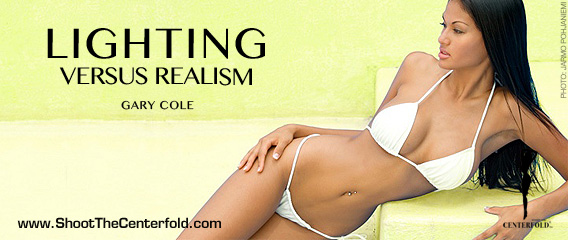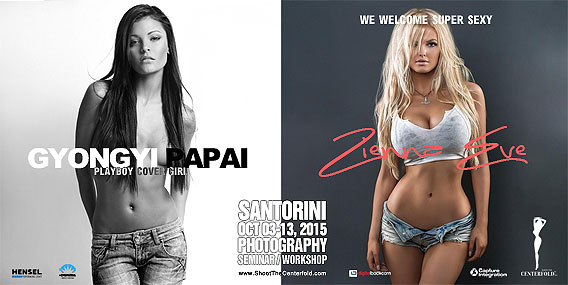Lighting Versus Realism – Gary Cole
If you’ve been reading this blog, you should know by now that our purpose here is not only to teach you photography but rather how to think about your photography or perhaps more accurately, to get you to think as a photographer. I’ll leave the technical side of lighting to Jarmo and his cadre of STC experts. If you want to learn how to use artificial lighting or how to supplement natural light, you can buy the STC Lighting Guide or, better, begin or continue attending STC workshop/seminars where you will encounter professionals who understand and can teach you all the intricacies of lighting a model, a set, a situation.
 As we know from previous discussions, there are no absolute rules in photography.
As we know from previous discussions, there are no absolute rules in photography.
If it works, it works. Even if it breaks every “rule” in the book.
However, I think most glamour photography situations aim to create a sense of realism while at the same time presenting the subject at its most attractive and impactful perspective. The human eye is a marvelous mechanism and most of the use of light in photographs seeks to capture what the eye would naturally take in.
I find that many photographers overlight the background of situations that are supposed to suggest an intimate reality.If you are shooting indoors in a situation, have you lit the scene in a way that your eye will recognize as real? If the situation suggests intimacy, does your lighting match what you are trying to achieve? I find that many photographers over light the background of situations that are supposed to suggest an intimate reality. If you are lucky enough to have an attractive woman in your bedroom (and admittedly you want enough light so that you can see her), do you turn all the lights on in the room and even add lights so that the back of the room is as bright as your subject?
Extraneous light in the background is a distraction. You don’t want harsh shadows on the face but have you eliminated all shadows? Some shadowing equals shape and the shape of the body, the shape of the breasts are only enhanced by appropriate shadow. The goal is to refine your lighting so that you can control it and make it less obvious to the viewer’s eye.
On outdoor situations, let’s say at the beach, we have the light of the sun with which to work. However, unless you get up very early or wait until the waning hours of sunlight, you’re likely to be dealing with harsh light that can be very unkind. Our eyes either squint or we put on sunglasses. It’s best to set your alarm and start early rather than shooting with a high sun. And be very careful about supplementing the light of the sun with artificial light.
I have seen many failed shoots because the photographer in his effort to eliminate unwanted shadows on his subject has resorted to artificial light to fill those shadows. It almost never looks natural and the image yells out unreality to the viewer. Fill light can be used but only very subtly. It’s probably better to simply but carefully bounce some sunlight with a reflective board or something similar. Even then, be careful not to bounce in too much light. (See previous blog about Sunbounce).
One of the bonuses of working in Playboy photography for all those years was our ongoing shooting of the centerfold where we used 8 x 10 cameras, lots of lighting and very careful posing. I’ve probably studied thousands of 8 x 10s with a magnifying glass, going over every square inch of the total image.One of the bonuses of working in Playboy photography for all those years was our ongoing shooting of the centerfold where we used 8 x 10 cameras, lots of lighting and very careful posing. I’ve probably studied thousands of 8 x 10s with a magnifying glass, going over every square inch of the total image. Doing that made me incredibly aware of all the nuances of light and shadow, of every detail in the image, not that I didn’t miss things more often than I’d like to admit. Fortunately, I had other good eyes also looking at the image—from the photographer, to another editor, to Hef himself and finally our print production manager.
Work at keeping your lighting as natural as possible when you are in situations where you are attempting to create a realistic scene. Look at your resulting images closely and critically. Is there an appropriate lighting balance on the model, on the background? Has your lighting created an appropriate mood for the scene you created?
If you want a superior opportunity to work with natural light, photograph some beautiful models and enjoy one of the most beautiful places on the planet, reserve one of the few remaining spots on STC’s Photo Experience on the island of Santorini, Greece where you will learn how to shape natural light and master the shadows.
~Gary Cole
© 2015 Copyright ShootTheCenterfold.com. All rights reserved.






















